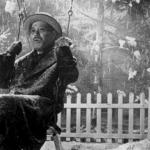Review of Kon-Tiki, Directed by Joachim Roenning and Espen Sandberg
Kon-Tiki is a name that has faded from popular memory, but launched a generation of explorers and adventurers, including astronauts. Kon-Tiki is the name of a raft that carried a crew of five Norwegians, a Swede, and a parrot named Lorita, all the way from Peru to the Polynesian islands. The point of the journey? To prove that people from the east (that is South Americans), not the west (that is Asians), populated Polynesia. That’s the story of the eponymous new release Kon-Tiki.
This dramatization of that epic journey is nominated for the Academy Award for Best Foreign Language Film last year and deserves it. The action sequences are squirm-in-your seat worthy; the visuals of oceanic life are beautiful and reminiscent of Life of Pi; and most importantly, Kon-Tiki successfully takes us on an adventure of survival in the wild that doesn’t try to compensate for a potentially long and boring tale by using over-the-top plot enhancers. The crew, of course, make it to Polynesia on their balsa wood raft, but the story lies in the courage and confidence of the crew’s leader, Thor Heyerdahl (Pål Hagen), who came up with the theory. The theory of westward migration was just a theory, but Heyerdahl risked his life to prove it. Heyerdahl sought to prove that the ancient civilizations viewed the oceans not viewed as barriers, but as highways.
Heyerdahl’s confidence starts from the very beginning, when he goes from sponsor to sponsor trying to raise funds for this expedition, but no money is forthcoming. He risks it all and decides to take out private loans. Then, to prove his theory, they build the Kon-Tiki raft using the original way these rafts were likely to have been built, with no modern materials. They depart from Peru and immediately find themselves on the wrong course, heading toward the Galapagos islands (and its attendant, deadly maelstroms) to the north, but are unable to redirect the raft because of the pre-modern equipment. Even then, Heyerdahl has faith in his theory.
At the last minute, they change direction and cast the southern current, which is to the joy of everyone, but the problems aren’t over. They survive storms, sharks, and a whole host of obstacles, and yet the crew remains steadfast because of Heyerdahl’s faith. There is, however, one Doubting Thomas on the Kon-Tiki, who brought modern wires onto the raft as an insurance policy if the ropes tying the balsa logs together frayed. Evidence is abundant that the ropes are fraying and the wood is soaking up water and this doubting crewmember brings out the wires as an act of desperation to convince Heyerdahl to save them by replacing rope with wire. Heyerdahl’s response? Throw the wires off the raft.
Now, whether or not this is such a wise move is up for debate. Were their lives worth the proving of a theory (which I believe has largely been rejected now by anthropologists)? What about Heyerdahl’s wife and children who he left behind without much consultation? At times the audience might wonder whether this mad adventure is purely for vainglory, but of course the film’s point is not to evoke pragmatism but idealism.
At one point, our Doubting Thomas is so upset by Heyerdahl’s persistent “faith” jargon that he tells him that this is not about religion. For what it’s worth, this crewmember’s implied understanding of religion is fideism (blind belief contrary to evidence). We of course end up rooting for Heyerdahl’s “blind belief” and denigrate this doubter. But what the doubter is saying is actually more right than not.
Let me explain. The analogy between this Kon-Tiki journey and the Christian pilgrimage is an easy comparison to make but it is a strained one at best: Heyerdahl’s faith has very little evidence (at least as far as the movie shows) to support it, whereas Christians are given the resurrection. The Kon-Tiki journey is very much the faith of one man against the world, whereas the Christian pilgrimage is a corporate journey with our local churches and the great cloud of witnesses. The true message of Kon-Tiki is not a religious one at all, but people may be quick to use it as a sermon illustration or over analyze it.
So what might we say is the actual message? I think it can be summed up in “believe, and you’ll make it.” Maybe this is the popularized version of the positive thinking movement. Heyerdahl is shown to look constantly at the image of the Incan sun god emblazoned on their sail, as if reaffirming to himself that he can trust the wisdom of those who have gone before. There’s also a strain of nature-human union that runs through the film. This crew has given themselves up to nature, to her storms and her own primordial sovereignty, and nature has accepted them by bringing them to their destination.
This doesn’t mean Kon-Tiki should be rejected out of hand. The portrayed confidence of Heyerdahl can be celebrated as daring–who doesn’t feel the heart tug of an idealist proven true? There is something in Christianity that rejoices to see risks taken and risks rewarded because the Christian faith is a risk in that if the Bible isn’t true, then we’ve lost everything. Hence the scene of Heyerdahl casting away the wire is so powerful; all worldly hope is rejected. Much like the rich young ruler, we are call to abandon everything and follow him. It’s a risk, but he who promised is faithful.












